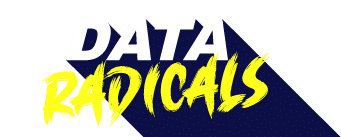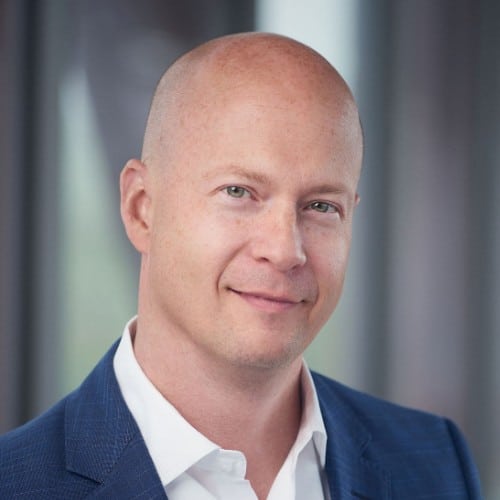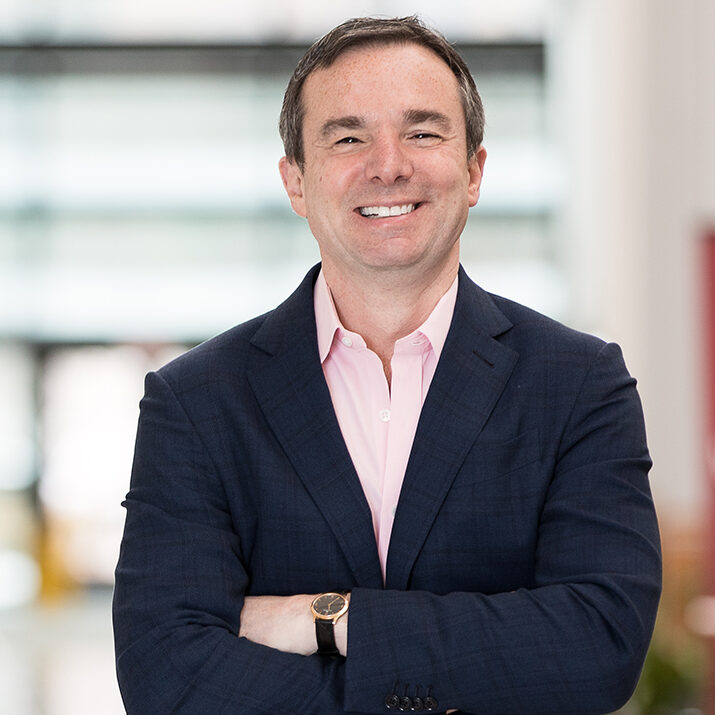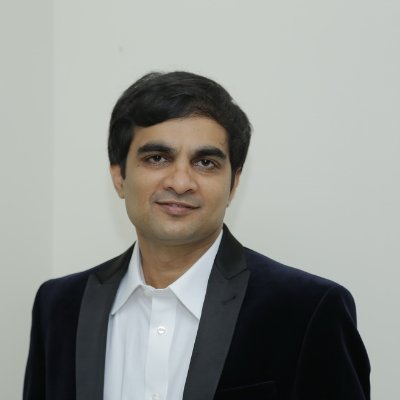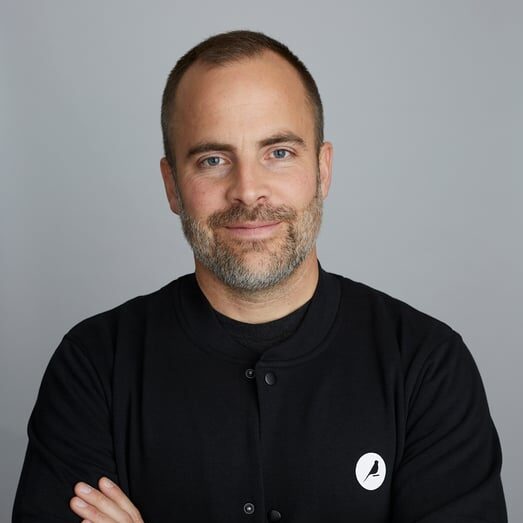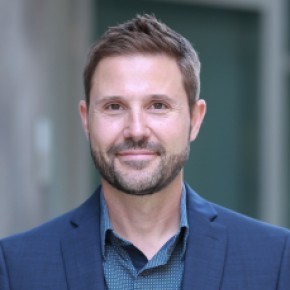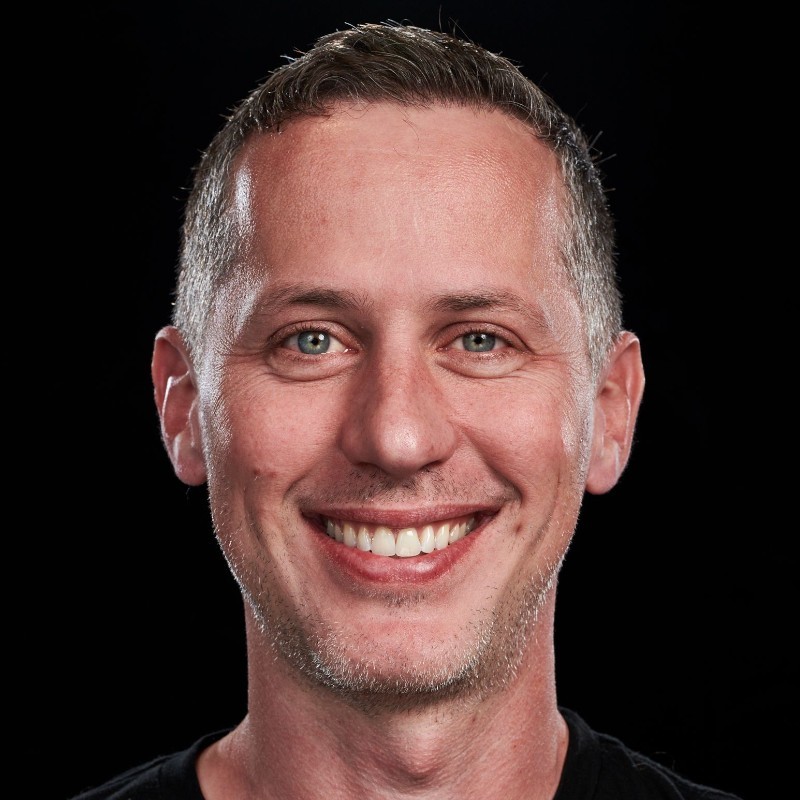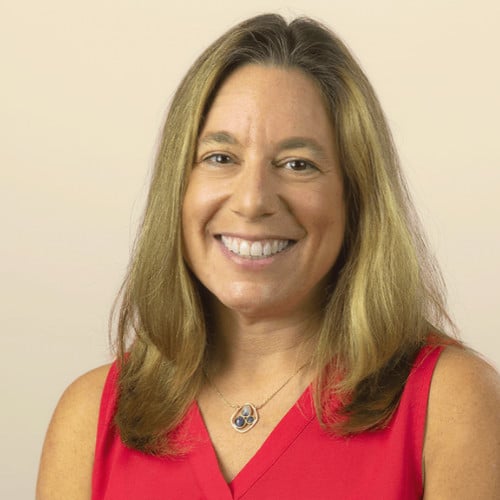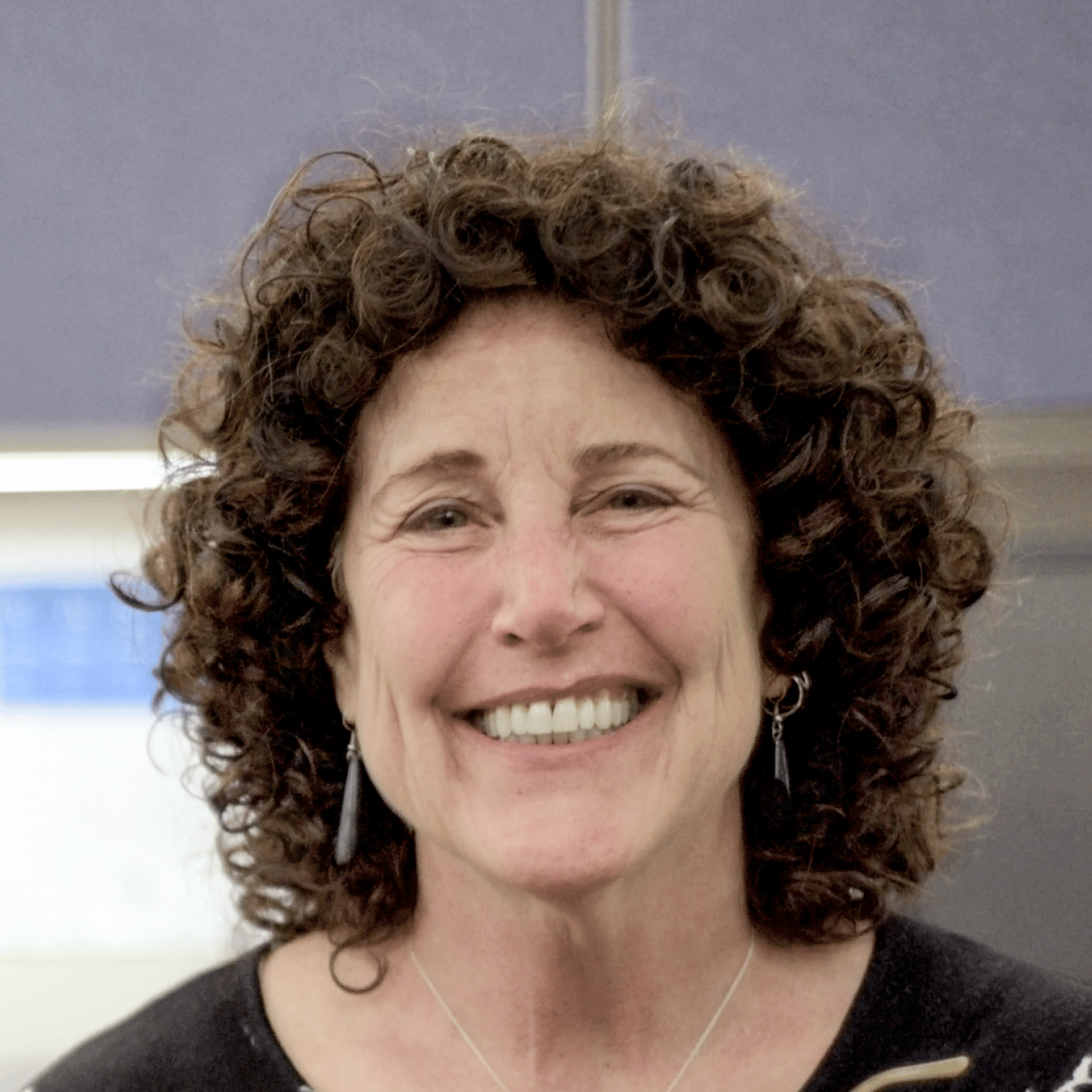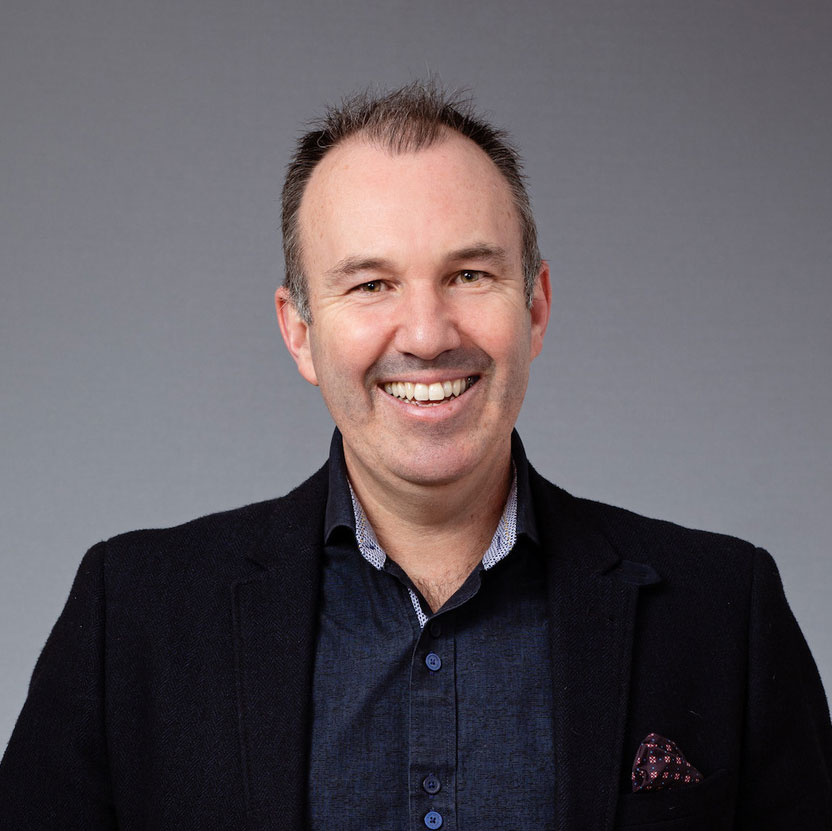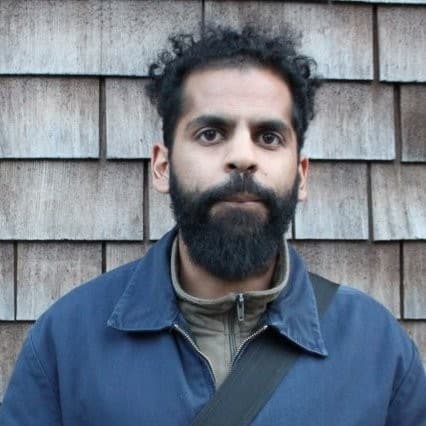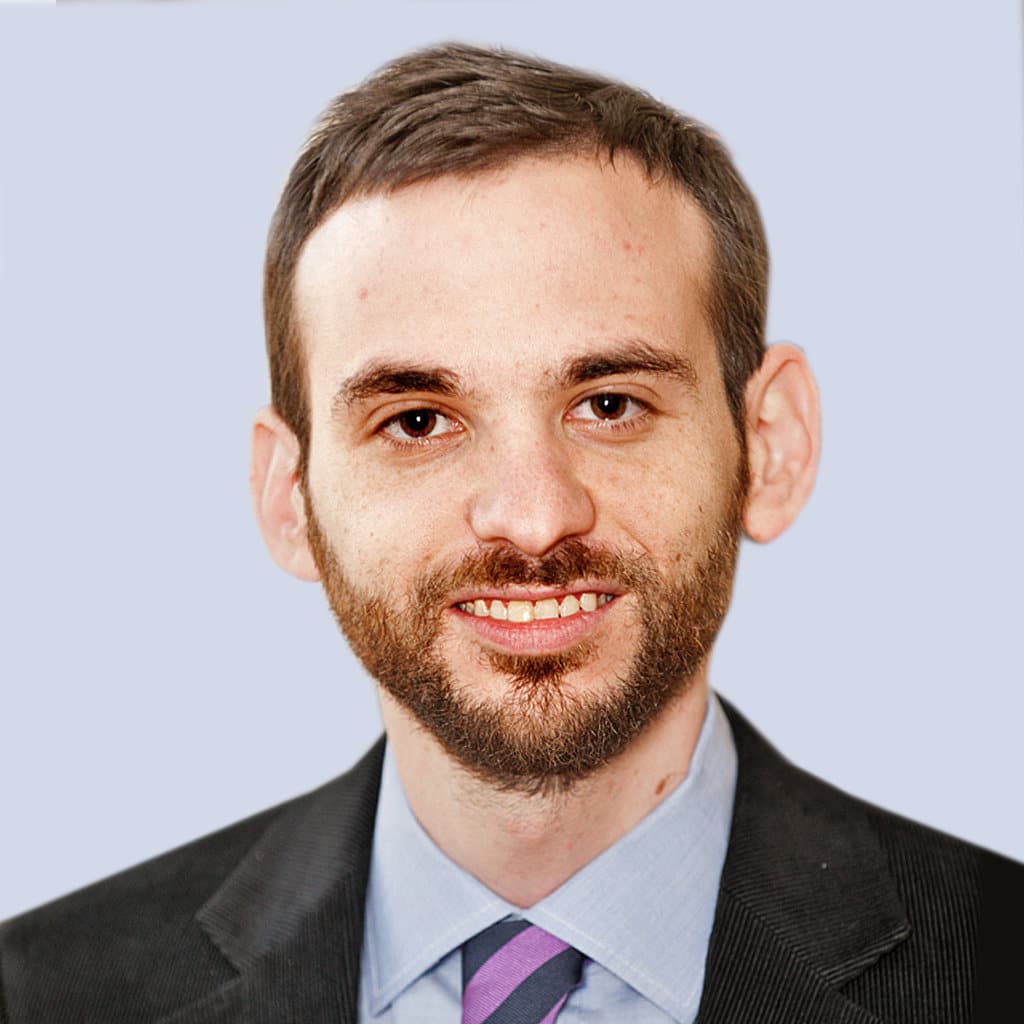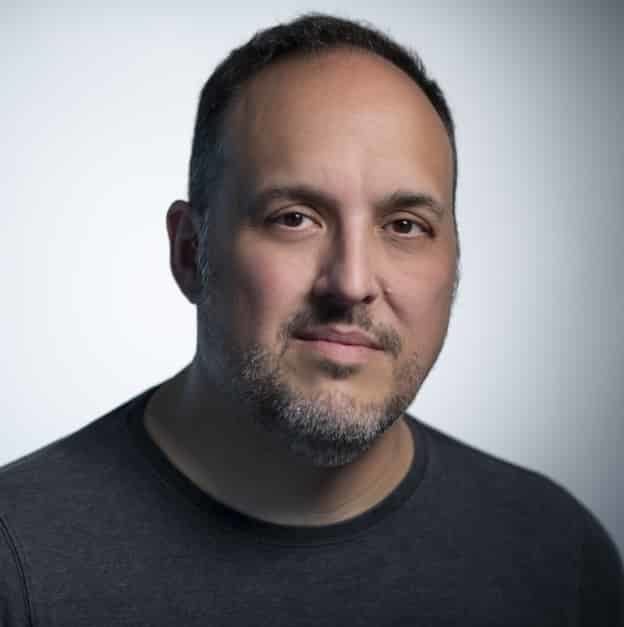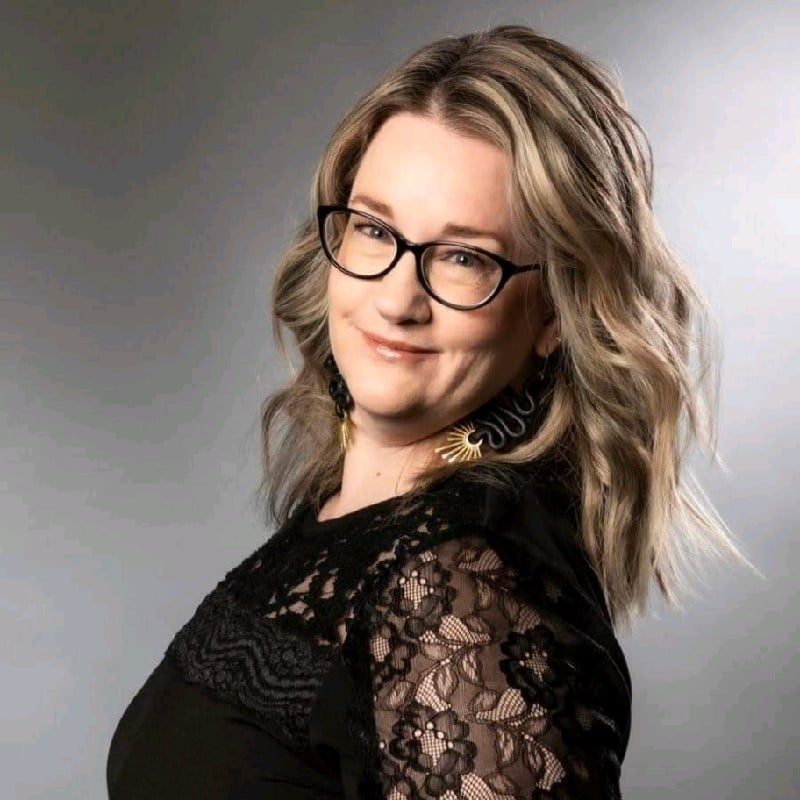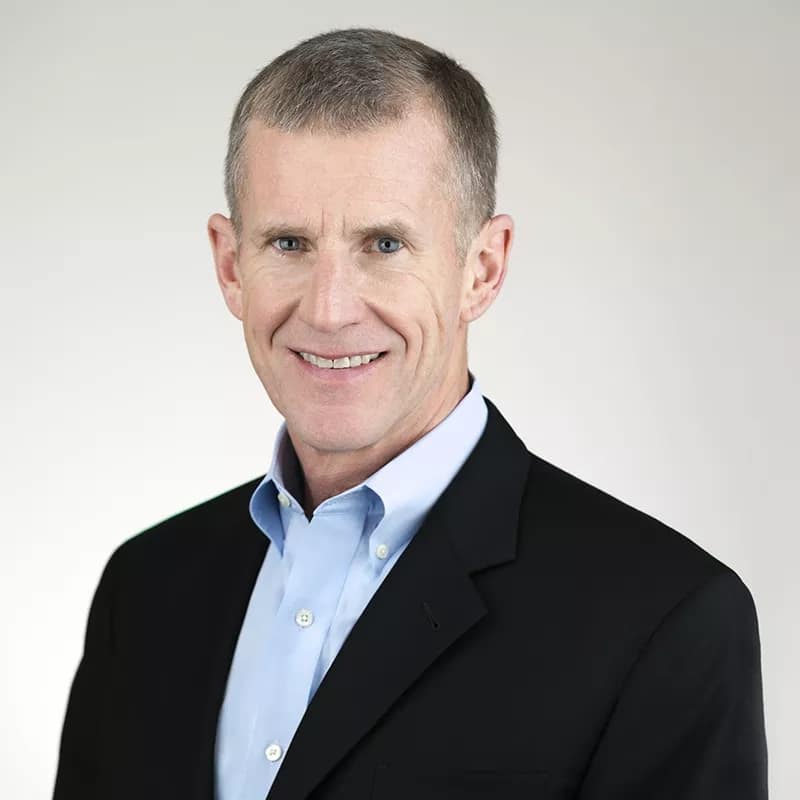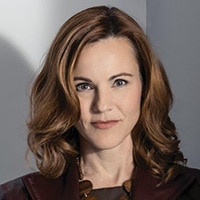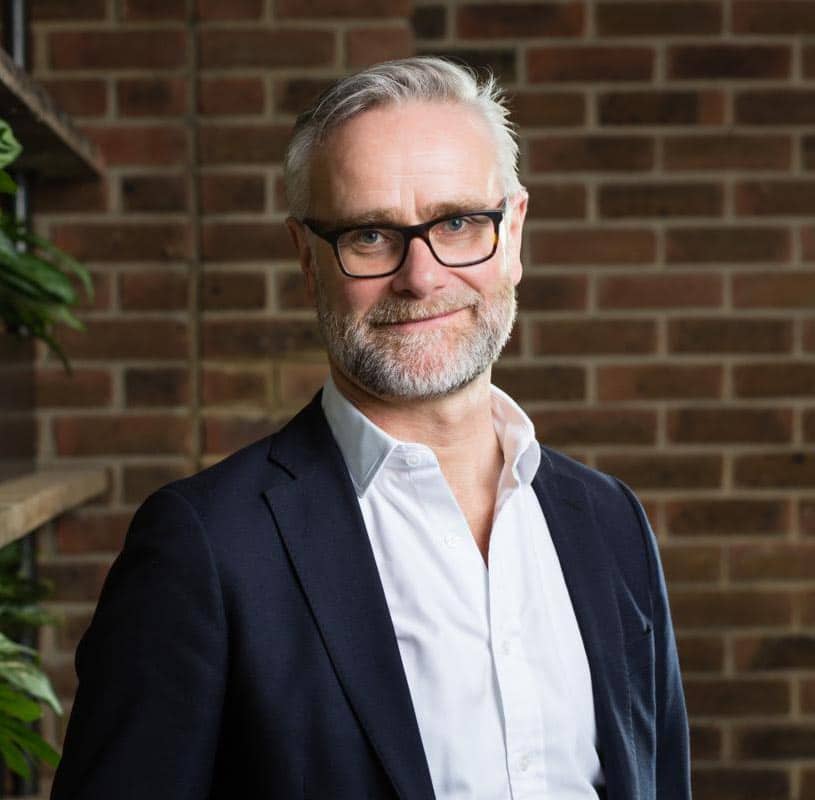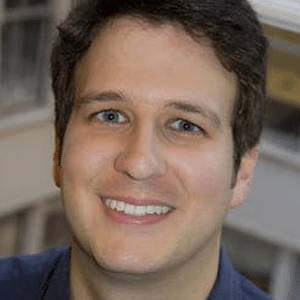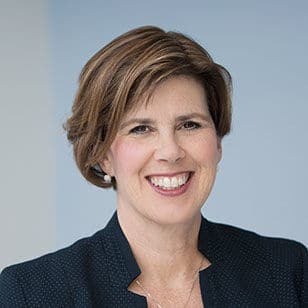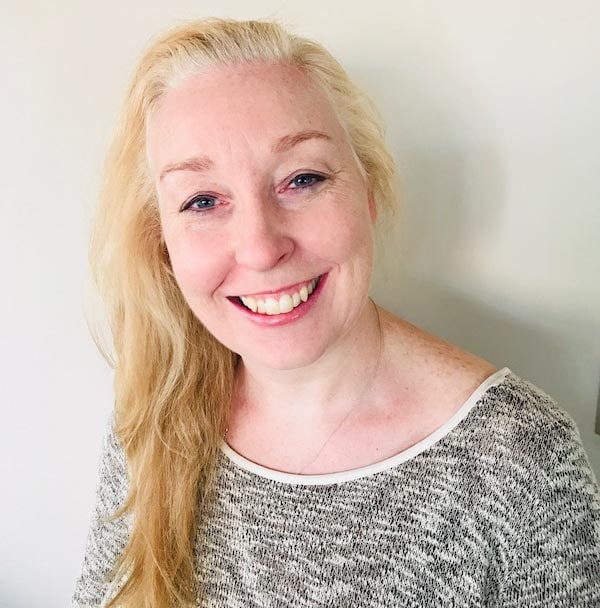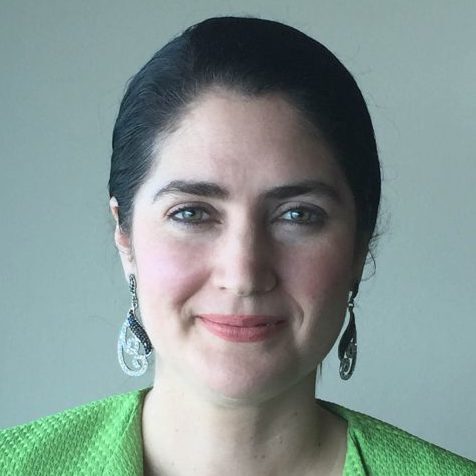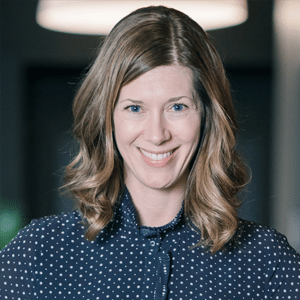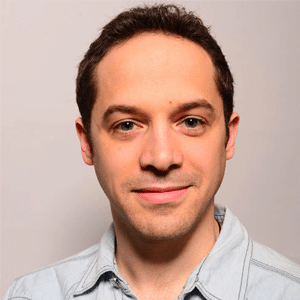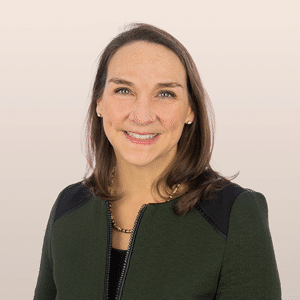Attacking Data Literacy
with Cindi Howson, Chief Data Strategy Officer at ThoughtSpot
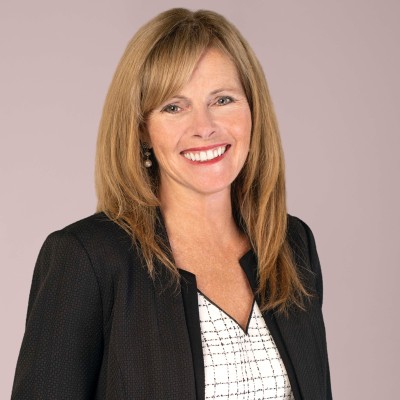 |
Cindi Howson Chief Data Strategy Officer at ThoughtSpot Cindi Howson is the Chief Data Strategy Officer at ThoughtSpot. Previously, she was the Vice President in Data and Analytics at Gartner, and served on the TDWI faculty for more than a decade. Cindi is the founder of BI Scorecard and the author of several books, including Successful Business Intelligence: Unlock the Value of BI & Big Data. |
 |
Satyen Sangani Co-founder & CEO of Alation As the Co-founder and CEO of Alation, Satyen lives his passion of empowering a curious and rational world by fundamentally improving the way data consumers, creators, and stewards find, understand, and trust data. Industry insiders call him a visionary entrepreneur. Those who meet him call him warm and down-to-earth. His kids call him “Dad.” |
 |
| Cindy Howson Chief Data Strategy Officer at ThoughtSpot
Cindi Howson is the Chief Data Strategy Officer at ThoughtSpot. Previously, she was the Vice President in Data and Analytics at Gartner, and served on the TDWI faculty for more than a decade. Cindi is the founder of BI Scorecard and the author of several books, including Successful Business Intelligence: Unlock the Value of BI & Big Data. |
 |
| Satyen Sangani Co-founder & CEO of Alation
As the Co-founder and CEO of Alation, Satyen lives his passion of empowering a curious and rational world by fundamentally improving the way data consumers, creators, and stewards find, understand, and trust data. Industry insiders call him a visionary entrepreneur. Those who meet him call him warm and down-to-earth. His kids call him “Dad.” |
 |
| Cindy Howson Chief Data Strategy Officer at ThoughtSpot
Cindi Howson is the Chief Data Strategy Officer at ThoughtSpot. Previously, she was the Vice President in Data and Analytics at Gartner, and served on the TDWI faculty for more than a decade. Cindi is the founder of BI Scorecard and the author of several books, including Successful Business Intelligence: Unlock the Value of BI & Big Data. |
 |
| Satyen Sangani Co-founder & CEO of Alation
As the Co-founder and CEO of Alation, Satyen lives his passion of empowering a curious and rational world by fundamentally improving the way data consumers, creators, and stewards find, understand, and trust data. Industry insiders call him a visionary entrepreneur. Those who meet him call him warm and down-to-earth. His kids call him “Dad.” |
Satyen Sangani (00:03): Once upon a time, there were six men, all blind from birth, who lived in a small village. Though they had never left their home, they eagerly listened to stories of the outside world.
But they were confused by stories they heard of elephants. An elephant’s ferocious power could destroy forests and villages.
But they also heard tales of people riding elephants for travel. Could such a creature actually be real?
To learn how such a mighty yet gentle creature existed, the blind men set out to experience an elephant with their sense of touch.
Each man set a hand on the majestic animal.
The first man felt the elephant’s trunk and thought it must be a large, thick snake.
The second man ran his fingers along the beast’s tusk and assumed an elephant is hard and smooth, like a spear.
When the third man grazed the elephant’s ear with his fingers, the air moved, cooling him. The elephant was a fan!
The fourth man, feeling the elephant’s leg, pronounced it a large cow.
The fifth man shook the elephant’s tail and declared the elephant was a rope.
And the final man, setting his hand on the elephant’s body, said the creature was like a large wall.
The men could not believe they disagreed. As they argued into the night, a young woman approached them and said they were all correct.
Because each man had only felt one part of the elephant, he alone could not grasp the entire picture. But if they combined their observations, they could truly understand what an elephant was.
END MUSIC
The story of the blind men and the elephant is at least two thousand years old. It can be found in Buddhist, Hindu, and Jain texts. It’s a simple, yet powerful story of how our blind spots — literally — can create tension and confusion.
I see this as a story about the power of data.
(01:58) Data can show us our blind spots.
And one piece of data might not present the entire picture. We have to view data in the aggregate — to get a clear picture of what’s in front of us.
We all have elephants we are trying to understand. And today on Data Radicals, we’re talking with someone who spent her career illuminating blind spots.
Cindi Howson is the Chief Data Strategy Officer at ThoughtSpot and the host of The Data Chief podcast.
Cindi is an analytics and BI thought leader and expert with a flair for bridging business needs with technology. I can think of no better guest today to discuss our blind spots than her.
Producer Read (02:27): Welcome to Data Radicals, a show about the people who use data to see things that nobody else can. This episode features an interview with Cindi Howson, chief data strategy officer at Thoughtspot, and the host of the Data Chief Podcast. In this episode, she, and Satyen discuss the importance of data driven decision making, how to improve within an enterprise, how data can strengthen DNI initiatives and much more. This podcast is brought to by Alation. What if we told you that data governance can drive real business results. This white paper from Gardner shows you how. Go to Alation.com/DAG to get your free copy of Gardner’s guide. It’s called adaptive data and analytics governance to achieve digital business success. And it’s yours for the downloading. Check it out today.
The Growth of Business Intelligence (BI)
Satyen Sangani (03:16): Cindi has seen business intelligence — or BI — evolve dramatically throughout her career. To set the context for our conversation, she walked us through the growth of the field.
As you’ve kind of evolved through this space, you’ve seen so many different generations of products. How would you define the history of how this space has evolved? What are the key changes that you’ve seen over time? What have been the key innovations? If you were to tell a stylized history of BI, what have been those sort of major inflection points in that history, and walk us through what matters, all the way up until today. I think sometimes hearing that story from somebody who’s seen it is really helpful for people to get context as to where we are right now.
Cindi Howson (04:00): I would define it now as four generations and the first generation was really about reporting. And this was the era of BusinessObjects and Cognos, where these products let you generate reports often in a tabular form, writing the SQL for you.
Then the second generation was the visual base discovery that Spotfire and Click pioneered, but I would say Tableau brought it to the next level. And a lot of these products originated as desktop products.
The third generation was augmented analytics. This is about using things like AI-generated insights to help you find the hidden patterns in your data, but then also using things like search and natural language processing to truly let business users and non-technical users ask their own questions. The augmented analytics wave of disruption that ThoughtSpot pioneered — and at this point in time, I was at Gartner — started in an on-premises world.
So I would say this fourth generation that COVID accelerated, and vendors and partners like Snowflake and Databricks are further accelerating, is in the cloud. And it’s all about the ecosystem. It’s about connecting across that whole workflow in the cloud. If I go from an operational system — and maybe we’re talking about Workday or Salesforce, or some other analytical system — and I want to connect to that data, I’m going to ingest that, maybe using another cloud product, like Matillion or Fivetran, I’m going to maybe have some of that data in Snowflake. I might have some of that just in an S3 bucket or in Google BigQuery. And now I’m going to want to connect it to something like Alation and say, “What’s trusted? What’s clean? Where is this coming from? How stale is it?”
And then I’m going to want to visualize it in my analytics tool, like ThoughtSpot. And then I might want to run a predictive machine learning model or a segmentation on it, and I could use DataRobot or Google ML, and it’s all connected. But definitely in the cloud. So I would call that really the fourth generation.
The First Generation Lacked Dashboards
Satyen Sangani (06:57): Let me make sure that I got that right: You would say first-generation is reports and quite possibly dashboards, but the basic idea is, “Just get me the answer about what happened.”
Cindi Howson (07:06): The first generation lacked dashboards. There were no dashboards in those products.
Satyen Sangani (07:11): Got it. Didn’t BusinessObjects and Cognos have some dashboarding capabilities or am I totally off base on all of that.
Cindi Howson (07:19): They evolved to add those capabilities. BusinessObjects actually acquired Xcelsius to become their dashboard product, but very first-generation did not. And even the charting was very, very basic.
Satyen Sangani (07:34): And that charting, that sort of visual analytics, really then defined that second generation that you’re articulating. I certainly think about Click and Tableau as being really sort of the emblematic products where anybody could go to any database and just create this beautiful-looking chart that would make their analysis look so professional.
(07:57): Earlier we actually had Cole Knaflic, who talked about storytelling with data. And to me, that second generation corresponded with people’s ability to tell stories and build their careers with data.
And then there’s this idea of augmented analytics. This idea of, “Okay, now you’re doing the analysis. Let me help you do the analysis a little bit better.” And perhaps using AI and machine learning. Am I tracking correctly?
And then, and then the last generation is this idea of ubiquity, where basically all of the data’s in the cloud, all of your operational resources are in the cloud. And your analytics should just be where you’re making the decision, broadly defined. Did I capture that right or did I mess that up a little bit?
Cindi Howson (08:42): I think that’s good, but I should ask you because even prior to Alation, you were working at Oracle. So you’ve been around a long time. Do you agree with these four waves as I’ve described them?
Satyen Sangani (08:55): I do. It’s funny, because I think about it as this world where first generation was kind of “single source of truth.” And second generation is about the self-service evolution, which I think corresponds basically to your visual view.
I think in some sense, the visual tools allowed for agency with individuals where that world of reporting presumed a centralization, and I do think it’s the case that there’s this third wave, but I’ve combined the third wave where AI and the cloud are all one thing. But I think you’re right to say those are actually distinct things. They’re different and they can exist independently of each other.
I think that’s probably right — more correct. I would totally agree. And it’s funny because I always talk about BI as being the capability of helping people make decisions, whereas AI is basically the capability of helping machines make decisions.
But you’re talking about these things intersecting. Do you see that happening more and more in the technology going forward and, and how will that evolve people in their jobs and their roles? Cause I think that’s probably the critical question.
Cindi Howson (10:00): Yeah, it definitely is converging and it will help people. So again, if you think about “We need good data to really be able to do any kind of analytics or AI.” Have AI tell me about what I didn’t know to ask about. Show me the patterns in the data that I didn’t realize was causing my manufacturing defect or — if I’m thinking of a health care use case — this is the particular drug or treatment plan that has not been tried. Individual patient, that really will lead to a better outcome. And yet, I didn’t know to ask about that particular drug.
(10:49) So I think AI will make the humans smarter and I think it will also help with some of the toughest problems in the industry about data. We have a lot of data, but we still don’t understand fundamentals around gaps in the data and biases in the data that I would like AI to do a better job of warning us about
Technology Is Not the Problem. The Bigger Problem Is Poor Data Fluency or Literacy
Satyen Sangani (11:17): I’ve got to imagine that coming to this space from the outside is so confusing, especially when I speak about this to people who’ve never really done the work to understand analytics or AI or BI. And then I talk about what we do here at Alation as this thing called DI or data intelligence.
Cindi Howson (12:05): The technology is not the problem. The bigger problem is poor data fluency or data literacy, as some people like to call it. And yet the way that data is becoming part of everyone’s job, it’s not just a distinct profession, solely. We will continue to have data professionals, but data is part of everyone’s job. And if ever there’s been a teachable moment (as maybe exhausted as we are about talking about COVID), I actually had a person saying to me yesterday, “Oh my goodness, the case counts! Look at the case counts. How can this even be right, because I can’t get a test for my kids.
(12:41) And I said, “Hello? This is a data gap. Do you not realize that? And we had the data gaps from month one of this pandemic.” So now that person understands what a data gap is. And I said, take it a level further. If we really had good data, we would also be able to say, “Give me the data and the demographics of people that seem to be resistant to COVID or they just don’t get as sick.” Now we start to get a more complete picture of what’s actually going on in particular populations.
Then you talk about personal data and how that is either used to serve us or used against us. Everyday citizens are really learning more. What is data and how does it impact my day to day life?
Building Data Fluency and Literacy
Satyen Sangani (13:45): How do you think we navigate this big challenge that you’re describing of building fluency and literacy with data?
Cindi Howson (13:53): The first thing is recognizing that it’s not teaching somebody technology, it’s teaching somebody the language of the business or the language of life and how data impacts that life.
Take a college student applying for a job. How is data and AI going to help you or marginalize you in that process? It’s teaching them about data in context: the business context or the life context.
(14:22) And it’s making sure that we’re doing that at every age. We have a lot of business professionals that grew up pre-internet and those are some of the senior leaders trying to digitally transform their organizations now. So teaching them about data in a business context, that has to happen, and it has to happen at the other end of the spectrum that we are teaching data at a middle school, and certainly at a high school and college level. Colleges now have this, but I really think we’ve got to be addressing this at the middle school level as well.
Satyen Sangani (14:59): The role of education is massive here, but the challenge, of course, is that then there are swads of people who come through the educational system and who don’t necessarily have this awareness and understanding. And so then it’s left in the private sector and industry to sort of fill this gap, and then there’s this question of, “I’m running a company. Do I have the time or the energy or the budget to be able to do this work?” Do you see a mind shift change happening with folks saying, “Look, I do need to invest in this literacy,” or do you think that there’s still lots of resistance or has it evolved or changed at all? Or is it the same?
Cindi Howson (15:36): It has changed. Somebody said to me, “Cindy, what is the data economy?” And I said, “Well, that actually is the economy — full-stop — going forward.” And even now those savvy business users and business leaders realize that if they are not data-driven, they will very quickly become … just legacy. The question is how quickly will that happen? And there’s research, whether it’s from McKinsey or AT Kearney, which now actually publishes the ROI difference between leaders and laggards. Accenture had research showing that the revenue growth between analytics leaders is two to three times those of laggards. So it really is a business imperative. And we do increasingly see boards now saying to their management teams, “What is your plan to become data-driven?” And again, technology is a necessary ingredient, but that is not the hardest ingredient. It is both data literacy and also the culture.
What’s Your Plan to Become Data-Driven?
Satyen Sangani (16:45): Where do you start with that? Because there’s probably a lot of people who maybe get it and think, “Okay, I want to transform my company. I want to become more data literate. I want the organization to have a better data culture.”
But then, of course, there’s this question of what’s the first step? I guess that could be different for people, but how do you think about that and how do you advise people when they ask you.
Cindi Howson (17:07): I would always go back to the why. Putting it in the context of the business, whatever industry you’re in. If it’s media it’s to capture that market share and the amount of entertainment time share of wallet. If you’re in health care, it’s about improving patient outcomes without having the costs continue to spiral out of control. So you have to start with the why, and come up with a quick win to paint a picture of what is possible, but also to go back and break down legacy operating models, legacy mindsets. So start with a quick win. Share the success from that quick win and then rinse, repeat and scale.
Satyen Sangani(17:58): It’s funny because I think the idea of a quick win is often the most elusive thing — that thing and data analytics. Often, people who are drawn to analytics and data tend to be people who want organization and want neatness and want clarity. And yet this notion that says you can’t really solve world hunger, you’ve got to get a story out there that convinces people to get on the road with you; it’s tough to convince people to do, because people want to see larger change sooner,
Cindi Howson (18:30): Well, that’s okay. I would say go after world hunger, but how about maybe just start with the poverty in my one town? So start there, paint a vision for what’s possible, and then everyone works in parallel to get to that ultimate endgame. You can’t boil the ocean because people will lose interest. And then they’ll think, “This is just the shiny new thing that management is chasing — and we were doing just fine with the old way.” But if you take your eye off the ball … I mean, I just can’t think of a single industry not being disrupted right now.
Satyen Sangani (19:09): So if you then say, okay, well, great. I’ve gotten to the place where I’ve gotten my quick win and I’ve shown the power of what analytics can do, I’ve hired a couple of bright people who sort of really understand the data. And there’s some really good data out there. What is the next phase of the journey that trips people up that you find often happens. Where do people then get hung up, once that first stage is passed?
Cindi Howson (19:32): Well, you said an important thing, Satyen, that you hired a couple bright people. Where did you find those people and —
Satyen Sangani (19:40): Yeah. Where did I find those people?
Cindi Howson (19:42): We’re all competing for the same tight labor market. So you do have to bring others along in the journey. That’s about up-skilling and re-skilling because your longtime employees will have the domain knowledge and the tribal knowledge.
So this is where I think about, as long as everyone’s clear on the why, then it’s about incentivizing the right behavior. And that’s not always just money, like giving somebody a bonus. Maybe it’s the confidence that they’ll keep a job or get a promotion, but it’s also celebrating the good behavior. So whenever a data-driven decision-making process is shared — or, “Hey, I found this great insight” — if that’s celebrated, even if the metric is negative, I think it should be rewarded that the data was shared.
(20:41): And then how do you use that data to learn, to improve the metrics rather than using it to punish somebody? So you do have to re-skill and then think about the incentives. All the variable incentives, whether it’s money, celebrations, recognition, badging, gamification, user groups … all these things are super important. And this is where I do think for the leaders — the analytics leaders who often are change agents, the CDOs who may get pummeled in this process — their tribe may not always be internal. I think these change agents have to associate with others outside the organization so that they do not get demotivated or burned out when there’s too many setbacks or naysayers.
How to Be More Analytical With Your Data
Satyen Sangani (21:35):These people are being brought in ostensibly under this idea that like, “Hey, come in and get us some data and make us more analytical!” And there’s a sense that that’s an augmentation of the culture as opposed to actually a transformation of the culture. It’s interesting to hear that from CDOs from time to time.
Have you seen those situations where people have come in under this kind of augmentation theory, but have been successful to actually drive a bigger change — and really change how the company thinks? What do those leaders do? Because It just seems like such a gargantuan task.
Cindi Howson (22:12): It is a gargantuan task and yes, I think of so many that are successful and sometimes it’s from within and these same companies are often held up as ones to emulate. Some, I would say, also will get fed up and burned out, so they will not stay if they have not been able to make the changes successful. They will not stay.
But you look at whether it’s great digital natives or even traditional organizations that have evolved. This is where these people — I know they’ll get embarrassed when I mention their names — but some of them we’ve had as guests on The Data Chief podcast, or they are repeat award winners.
I look at some of the people at Verizon, whether it’s Ansar [Kassim] or Jeff Nodo, who actually went on to become the CFO, but they started in the analytics space.
Or one of my longtime customers, Sully McConnell, the CDO at The Hartford, that I have worked with across at least four or maybe even five companies. So he’s very much a change agent. He goes in, he evolves people to innovate. JoAnn Stonier at MasterCard, Sol Rashidi at Estee Lauder. She’s been across, I want to say cruise lines, music. There are these companies or individuals that will get them there.
Satyen Sangani (24:03):What are the things that you’ve seen that are common across those individuals?
Cindi Howson (24:07): If I think about characteristics of these people … I go back to Jim Collins’ Good to Great. He wrote about a level five leader, and they do have a mindset of putting the company first and the mission first and their egos are secondary. And they’re very much about the team.
And I do notice that these leaders almost don’t like it when I say, “Wow, that was great!” They prefer that I credit the team. And of course it is the team that makes it possible, but it is the team that will get behind that mission and they are great collaborators and connectors. So they’re reading the room and they’re figuring out who is going to block them and who is going to help them. And so they’re building allies while they also work on the mindsets that are holding them back.
Satyen Sangani (25:06):Yeah, which I think is really interesting. It’s funny because in the technology adoption cycle, if you think through crossing the chasm, there’s always this notion that sort of says, focus on your early champions to get to that success. That kind of gets back to your success story, right? Get successful first and then go back and perhaps address the people who are detractors because, day one, if all you do is spend your time on the detractors, you’re never going to get anywhere.
Cindi Howson (25:32): Absolutely.
Satyen Sangani (26:49):Cindi is also working to eliminate blind spots in our field by hosting The Data Chief, ThoughtSpot’s company podcast.
Cindi Howson (26:55): I have to give full credit. The idea of the podcast came from our CMO, Scott Holden, who was a guest on another podcast. And he’s like, “We really should do podcasting,” because he is an active podcast listener. I, on the other hand, am an active reader. I would happily write another book. I could write a book a year if I had my druthers, but it’s about bringing the best voices in the business and having honest conversations about this range of topics, so organizations can evolve and really get to that ultimate business value and talk about what is working, what’s not working.
And our industry is changing so, so quickly. If you want to go back just two years ago, how much were we really talking about data mesh, data fabric? And I was relieved, in a way, that I wrote about how this is the top trend for 2022. We did a Data Chief live session on this in the fall and only now can I actually say, “Good, everyone else is kind of agreeing with this as the top trend,” because I didn’t know if I was being premature here. So you think about how quickly the technology is changing. And the range of topics. It’s technology. It’s people, process, culture, use cases. And I think the podcast gives people another way of educating themselves and being inspired.
Satyen Sangani (25:34):But being able to read the room is really hard.
What are some of the differences? They must have differences in styles. Where do you see the opportunity for people to have different strokes or different approaches?
Cindi Howson (25:47): I think every style has to align with the industry and the company that you’re going into. Some will be more autocratic and some will be more consensus-driven and it’s a question of how to get the job done within that existing culture, because culture is so slow moving.
Sometimes you have to change the people to make that happen, but I also think the way to change the people is also to change the incentives and clearly communicate the why. When we keep throwing technology at people without explaining the why, that’s when you get the pushback — because everyone’s working really hard, and jobs in the data and analytics space are incredibly busy. There will always be more work to do than you can possibly get to. So it’s about ruthless prioritization and making sure that you continue to evolve.
How We Can Use Data to Get Beyond Vanity Metrics
Satyen Sangani (28:33):I think that this idea of being able to sort of share tips and tricks, and sometimes the tactics, and sometimes the strategies, can be really helpful and you never really know what you’re going to pick up, but that one nugget could be the difference between success and failure. And sometimes you just can’t write everything down and you can’t capture everything always so quickly or succinctly. So these conversations are awesome.
Cindi Howson (28:54): Yeah, exactly.
Satyen Sangani (28:54):Let me change topics because there’s one topic that you’ve written about that I think is really critical and obviously very important to you — and me too! — which is diversity and inclusion. And so you wrote this great article in HBR. Can you tell us a little bit about what you wrote and why you wrote it?
Cindi Howson (29:10): It’s really about how we can use data to get beyond vanity metrics. Organizations like to report their diversity and inclusion stats — actually, let me correct that: Organizations use data to report their diversity stats. They do not share their inclusion stats. Inclusion is really, do you have a sense of belonging? Are you getting equal opportunities? As one organization likes to say, diversity is being invited to the party. Inclusion is being invited to dance at the party.
It’s hard to get consistent inclusion metrics and an organization may say, “Look at all the minorities we hired!” And yet they’re in the low-paying jobs or there’s still high turnover there because they always get talked over or they don’t get considered for the next promotion or what have you. I want companies to think beyond just reporting the obvious headcount numbers, and really look at leading indicators to inclusion. That might be using things like looking at calendar meeting invites or Slack channel contributions. What are the diversity metrics and what are the participation rates for minorities in these different venues? Looking at things like employee wellbeing and employee engagement platforms, what are the early indicators here? That is my hope for the industry. We still have so much to do.
Satyen Sangani (30:50):As I read that article, we had just embarked here at Alation on a similar initiative where we basically did diversity measurement on a team-by-team basis to understand how diverse we truly were and then would start to target teams’ recruiting metrics, to say, “You might be red, yellow, green, relative to the company average.”
After reading your article, one of the hopes that I have is that in the same way, people have compensation measurement and compensation data measured — there’s this great service called Option Impact, where everybody contributes in the tech field their comp data, and therefore you can figure out what the market actually looks like.
And you would wish — at least I would wish — if there are some listeners that are interested, that you could have companies contribute their diversity data, because you could then see a world in which everybody’s contributing that data. Then the lack of contribution becomes its own thing and people can compare to what best-in-class looks like. And I think a lot of that measurement could help evolve the field pretty substantially.
Cindi Howson (31:56): Oh, absolutely. Bloomberg has taken some good steps here initially with the gender equality index. They’re evolving that to include other minorities. But then also, if I look at ADP, the payroll company, they have some benchmarking data as well. So the more we share this, I think that’s a positive. But Satyen, look in the tech industry.
If you were following Twitter recently, look at some of the comments from the CEO of Palantir, that DEI should be D-I-E “die.” Like, who cares? Something like this was one of his tweets. So I think we have to keep paying attention. We want the best people. And I want to get to a point where we don’t have to talk about this, where we just are diverse and people are not being marginalized unintentionally. A lot of this is really about unintentional biases, but it’s still a pernicious problem.
Data Gives Us the Ability to Recognize Blind Spots
Satyen Sangani (33:12): “At Alation, our company motto is Data Intelligence + Human Brilliance.
And I think this conversation shows that we truly cannot have one without the other. Data gives us the ability to recognize blind spots we didn’t even realize existed. But without the human factor — high data fluency rates and a strong data culture — we will never realize that an elephant is so much more than we can feel.
Thank you to Cindi for joining us for this episode of Data Radicals. This is Satyen Sangani, co-founder and CEO of Alation. Thank you for listening.
Producer (33:43): Alation gives enterprises the tools to make data driven decisions and grow a data culture. Our data catalog can minimize the time workers spend searching for and worrying about the data they need to do their jobs. Turning months of frustration into minutes of action. Visit Alation — that’s Alation with an “a” dot.com today.
Satyen Sangani (00:03): Once upon a time, there were six men, all blind from birth, who lived in a small village. Though they had never left their home, they eagerly listened to stories of the outside world.
But they were confused by stories they heard of elephants. An elephant’s ferocious power could destroy forests and villages.
But they also heard tales of people riding elephants for travel. Could such a creature actually be real?
To learn how such a mighty yet gentle creature existed, the blind men set out to experience an elephant with their sense of touch.
Each man set a hand on the majestic animal.
The first man felt the elephant’s trunk and thought it must be a large, thick snake.
The second man ran his fingers along the beast’s tusk and assumed an elephant is hard and smooth, like a spear.
When the third man grazed the elephant’s ear with his fingers, the air moved, cooling him. The elephant was a fan!
The fourth man, feeling the elephant’s leg, pronounced it a large cow.
The fifth man shook the elephant’s tail and declared the elephant was a rope.
And the final man, setting his hand on the elephant’s body, said the creature was like a large wall.
The men could not believe they disagreed. As they argued into the night, a young woman approached them and said they were all correct.
Because each man had only felt one part of the elephant, he alone could not grasp the entire picture. But if they combined their observations, they could truly understand what an elephant was.
END MUSIC
The story of the blind men and the elephant is at least two thousand years old. It can be found in Buddhist, Hindu, and Jain texts. It’s a simple, yet powerful story of how our blind spots — literally — can create tension and confusion.
I see this as a story about the power of data.
(01:58) Data can show us our blind spots.
And one piece of data might not present the entire picture. We have to view data in the aggregate — to get a clear picture of what’s in front of us.
We all have elephants we are trying to understand. And today on Data Radicals, we’re talking with someone who spent her career illuminating blind spots.
Cindi Howson is the Chief Data Strategy Officer at ThoughtSpot and the host of The Data Chief podcast.
Cindi is an analytics and BI thought leader and expert with a flair for bridging business needs with technology. I can think of no better guest today to discuss our blind spots than her.
Producer Read (02:27): Welcome to Data Radicals, a show about the people who use data to see things that nobody else can. This episode features an interview with Cindi Howson, chief data strategy officer at Thoughtspot, and the host of the Data Chief Podcast. In this episode, she, and Satyen discuss the importance of data driven decision making, how to improve within an enterprise, how data can strengthen DNI initiatives and much more. This podcast is brought to by Alation. What if we told you that data governance can drive real business results. This white paper from Gardner shows you how. Go to Alation.com/DAG to get your free copy of Gardner’s guide. It’s called adaptive data and analytics governance to achieve digital business success. And it’s yours for the downloading. Check it out today.
The Growth of Business Intelligence (BI)
Satyen Sangani (03:16): Cindi has seen business intelligence — or BI — evolve dramatically throughout her career. To set the context for our conversation, she walked us through the growth of the field.
As you’ve kind of evolved through this space, you’ve seen so many different generations of products. How would you define the history of how this space has evolved? What are the key changes that you’ve seen over time? What have been the key innovations? If you were to tell a stylized history of BI, what have been those sort of major inflection points in that history, and walk us through what matters, all the way up until today. I think sometimes hearing that story from somebody who’s seen it is really helpful for people to get context as to where we are right now.
Cindi Howson (04:00): I would define it now as four generations and the first generation was really about reporting. And this was the era of BusinessObjects and Cognos, where these products let you generate reports often in a tabular form, writing the SQL for you.
Then the second generation was the visual base discovery that Spotfire and Click pioneered, but I would say Tableau brought it to the next level. And a lot of these products originated as desktop products.
The third generation was augmented analytics. This is about using things like AI-generated insights to help you find the hidden patterns in your data, but then also using things like search and natural language processing to truly let business users and non-technical users ask their own questions. The augmented analytics wave of disruption that ThoughtSpot pioneered — and at this point in time, I was at Gartner — started in an on-premises world.
So I would say this fourth generation that COVID accelerated, and vendors and partners like Snowflake and Databricks are further accelerating, is in the cloud. And it’s all about the ecosystem. It’s about connecting across that whole workflow in the cloud. If I go from an operational system — and maybe we’re talking about Workday or Salesforce, or some other analytical system — and I want to connect to that data, I’m going to ingest that, maybe using another cloud product, like Matillion or Fivetran, I’m going to maybe have some of that data in Snowflake. I might have some of that just in an S3 bucket or in Google BigQuery. And now I’m going to want to connect it to something like elation and say, “What’s trusted? What’s clean? Where is this coming from? How stale is it?”
And then I’m going to want to visualize it in my analytics tool, like ThoughtSpot. And then I might want to run a predictive machine learning model or a segmentation on it, and I could use DataRobot or Google ML, and it’s all connected. But definitely in the cloud. So I would call that really the fourth generation.
The First Generation Lacked Dashboards
Satyen Sangani (06:57): Let me make sure that I got that right: You would say first-generation is reports and quite possibly dashboards, but the basic idea is, “Just get me the answer about what happened.”
Cindi Howson (07:06): The first generation lacked dashboards. There were no dashboards in those products.
Satyen Sangani (07:11): Got it. Didn’t BusinessObjects and Cognos have some dashboarding capabilities or am I totally off base on all of that.
Cindi Howson (07:19): They evolved to add those capabilities. BusinessObjects actually acquired Xcelsius to become their dashboard product, but very first-generation did not. And even the charting was very, very basic.
Satyen Sangani (07:34): And that charting, that sort of visual analytics, really then defined that second generation that you’re articulating. I certainly think about Click and Tableau as being really sort of the emblematic products where anybody could go to any database and just create this beautiful-looking chart that would make their analysis look so professional.
(07:57): Earlier we actually had Cole Knaflic, who talked about storytelling with data. And to me, that second generation corresponded with people’s ability to tell stories and build their careers with data.
And then there’s this idea of augmented analytics. This idea of, “Okay, now you’re doing the analysis. Let me help you do the analysis a little bit better.” And perhaps using AI and machine learning. Am I tracking correctly?
And then, and then the last generation is this idea of ubiquity, where basically all of the data’s in the cloud, all of your operational resources are in the cloud. And your analytics should just be where you’re making the decision, broadly defined. Did I capture that right or did I mess that up a little bit?
Cindi Howson (08:42): I think that’s good, but I should ask you because even prior to Alation, you were working at Oracle. So you’ve been around a long time. Do you agree with these four waves as I’ve described them?
Satyen Sangani (08:55): I do. It’s funny, because I think about it as this world where first generation was kind of “single source of truth.” And second generation is about the self-service evolution, which I think corresponds basically to your visual view.
I think in some sense, the visual tools allowed for agency with individuals where that world of reporting presumed a centralization, and I do think it’s the case that there’s this third wave, but I’ve combined the third wave where AI and the cloud are all one thing. But I think you’re right to say those are actually distinct things. They’re different and they can exist independently of each other.
I think that’s probably right — more correct. I would totally agree. And it’s funny because I always talk about BI as being the capability of helping people make decisions, whereas AI is basically the capability of helping machines make decisions.
But you’re talking about these things intersecting. Do you see that happening more and more in the technology going forward and, and how will that evolve people in their jobs and their roles? Cause I think that’s probably the critical question.
Cindi Howson (10:00): Yeah, it definitely is converging and it will help people. So again, if you think about “We need good data to really be able to do any kind of analytics or AI.” Have AI tell me about what I didn’t know to ask about. Show me the patterns in the data that I didn’t realize was causing my manufacturing defect or — if I’m thinking of a health care use case — this is the particular drug or treatment plan that has not been tried. Individual patient, that really will lead to a better outcome. And yet, I didn’t know to ask about that particular drug.
(10:49) So I think AI will make the humans smarter and I think it will also help with some of the toughest problems in the industry about data. We have a lot of data, but we still don’t understand fundamentals around gaps in the data and biases in the data that I would like AI to do a better job of warning us about
Technology Is Not the Problem. The Bigger Problem Is Poor Data Fluency or Literacy
Satyen Sangani (11:17): I’ve got to imagine that coming to this space from the outside is so confusing, especially when I speak about this to people who’ve never really done the work to understand analytics or AI or BI. And then I talk about what we do here at Alation as this thing called DI or data intelligence.
Cindi Howson (12:05): The technology is not the problem. The bigger problem is poor data fluency or data literacy, as some people like to call it. And yet the way that data is becoming part of everyone’s job, it’s not just a distinct profession, solely. We will continue to have data professionals, but data is part of everyone’s job. And if ever there’s been a teachable moment (as maybe exhausted as we are about talking about COVID), I actually had a person saying to me yesterday, “Oh my goodness, the case counts! Look at the case counts. How can this even be right, because I can’t get a test for my kids.
(12:41) And I said, “Hello? This is a data gap. Do you not realize that? And we had the data gaps from month one of this pandemic.” So now that person understands what a data gap is. And I said, take it a level further. If we really had good data, we would also be able to say, “Give me the data and the demographics of people that seem to be resistant to COVID or they just don’t get as sick.” Now we start to get a more complete picture of what’s actually going on in particular populations.
Then you talk about personal data and how that is either used to serve us or used against us. Everyday citizens are really learning more. What is data and how does it impact my day to day life?
Building Data Fluency and Literacy
Satyen Sangani (13:45): How do you think we navigate this big challenge that you’re describing of building fluency and literacy with data?
Cindi Howson (13:53): The first thing is recognizing that it’s not teaching somebody technology, it’s teaching somebody the language of the business or the language of life and how data impacts that life.
Take a college student applying for a job. How is data and AI going to help you or marginalize you in that process? It’s teaching them about data in context: the business context or the life context.
(14:22) And it’s making sure that we’re doing that at every age. We have a lot of business professionals that grew up pre-internet and those are some of the senior leaders trying to digitally transform their organizations now. So teaching them about data in a business context, that has to happen, and it has to happen at the other end of the spectrum that we are teaching data at a middle school, and certainly at a high school and college level. Colleges now have this, but I really think we’ve got to be addressing this at the middle school level as well.
Satyen Sangani (14:59): The role of education is massive here, but the challenge, of course, is that then there are swads of people who come through the educational system and who don’t necessarily have this awareness and understanding. And so then it’s left in the private sector and industry to sort of fill this gap, and then there’s this question of, “I’m running a company. Do I have the time or the energy or the budget to be able to do this work?” Do you see a mind shift change happening with folks saying, “Look, I do need to invest in this literacy,” or do you think that there’s still lots of resistance or has it evolved or changed at all? Or is it the same?
Cindi Howson (15:36): It has changed. Somebody said to me, “Cindy, what is the data economy?” And I said, “Well, that actually is the economy — full-stop — going forward.” And even now those savvy business users and business leaders realize that if they are not data-driven, they will very quickly become … just legacy. The question is how quickly will that happen? And there’s research, whether it’s from McKinsey or AT Kearney, which now actually publishes the ROI difference between leaders and laggards. Accenture had research showing that the revenue growth between analytics leaders is two to three times those of laggards. So it really is a business imperative. And we do increasingly see boards now saying to their management teams, “What is your plan to become data-driven?” And again, technology is a necessary ingredient, but that is not the hardest ingredient. It is both data literacy and also the culture.
What’s Your Plan to Become Data-Driven?
Satyen Sangani (16:45): Where do you start with that? Because there’s probably a lot of people who maybe get it and think, “Okay, I want to transform my company. I want to become more data literate. I want the organization to have a better data culture.”
But then, of course, there’s this question of what’s the first step? I guess that could be different for people, but how do you think about that and how do you advise people when they ask you.
Cindi Howson (17:07): I would always go back to the why. Putting it in the context of the business, whatever industry you’re in. If it’s media it’s to capture that market share and the amount of entertainment time share of wallet. If you’re in health care, it’s about improving patient outcomes without having the costs continue to spiral out of control. So you have to start with the why, and come up with a quick win to paint a picture of what is possible, but also to go back and break down legacy operating models, legacy mindsets. So start with a quick win. Share the success from that quick win and then rinse, repeat and scale.
Satyen Sangani(17:58): It’s funny because I think the idea of a quick win is often the most elusive thing — that thing and data analytics. Often, people who are drawn to analytics and data tend to be people who want organization and want neatness and want clarity. And yet this notion that says you can’t really solve world hunger, you’ve got to get a story out there that convinces people to get on the road with you; it’s tough to convince people to do, because people want to see larger change sooner,
Cindi Howson (18:30): Well, that’s okay. I would say go after world hunger, but how about maybe just start with the poverty in my one town? So start there, paint a vision for what’s possible, and then everyone works in parallel to get to that ultimate endgame. You can’t boil the ocean because people will lose interest. And then they’ll think, “This is just the shiny new thing that management is chasing — and we were doing just fine with the old way.” But if you take your eye off the ball … I mean, I just can’t think of a single industry not being disrupted right now.
Satyen Sangani (19:09): So if you then say, okay, well, great. I’ve gotten to the place where I’ve gotten my quick win and I’ve shown the power of what analytics can do, I’ve hired a couple of bright people who sort of really understand the data. And there’s some really good data out there. What is the next phase of the journey that trips people up that you find often happens. Where do people then get hung up, once that first stage is passed?
Cindi Howson (19:32): Well, you said an important thing, Satyen, that you hired a couple bright people. Where did you find those people and —
Satyen Sangani (19:40): Yeah. Where did I find those people?
Cindi Howson (19:42): We’re all competing for the same tight labor market. So you do have to bring others along in the journey. That’s about up-skilling and re-skilling because your longtime employees will have the domain knowledge and the tribal knowledge.
So this is where I think about, as long as everyone’s clear on the why, then it’s about incentivizing the right behavior. And that’s not always just money, like giving somebody a bonus. Maybe it’s the confidence that they’ll keep a job or get a promotion, but it’s also celebrating the good behavior. So whenever a data-driven decision-making process is shared — or, “Hey, I found this great insight” — if that’s celebrated, even if the metric is negative, I think it should be rewarded that the data was shared.
(20:41): And then how do you use that data to learn, to improve the metrics rather than using it to punish somebody? So you do have to re-skill and then think about the incentives. All the variable incentives, whether it’s money, celebrations, recognition, badging, gamification, user groups … all these things are super important. And this is where I do think for the leaders — the analytics leaders who often are change agents, the CDOs who may get pummeled in this process — their tribe may not always be internal. I think these change agents have to associate with others outside the organization so that they do not get demotivated or burned out when there’s too many setbacks or naysayers.
How to Be More Analytical With Your Data
Satyen Sangani (21:35):These people are being brought in ostensibly under this idea that like, “Hey, come in and get us some data and make us more analytical!” And there’s a sense that that’s an augmentation of the culture as opposed to actually a transformation of the culture. It’s interesting to hear that from CDOs from time to time.
Have you seen those situations where people have come in under this kind of augmentation theory, but have been successful to actually drive a bigger change — and really change how the company thinks? What do those leaders do? Because It just seems like such a gargantuan task.
Cindi Howson (22:12): It is a gargantuan task and yes, I think of so many that are successful and sometimes it’s from within and these same companies are often held up as ones to emulate. Some, I would say, also will get fed up and burned out, so they will not stay if they have not been able to make the changes successful. They will not stay.
But you look at whether it’s great digital natives or even traditional organizations that have evolved. This is where these people — I know they’ll get embarrassed when I mention their names — but some of them we’ve had as guests on The Data Chief podcast, or they are repeat award winners.
I look at some of the people at Verizon, whether it’s Ansar [Kassim] or Jeff Nodo, who actually went on to become the CFO, but they started in the analytics space.
Or one of my longtime customers, Sully McConnell, the CDO at The Hartford, that I have worked with across at least four or maybe even five companies. So he’s very much a change agent. He goes in, he evolves people to innovate. JoAnn Stonier at MasterCard, Sol Rashidi at Estee Lauder. She’s been across, I want to say cruise lines, music. There are these companies or individuals that will get them there.
Satyen Sangani (24:03):What are the things that you’ve seen that are common across those individuals?
Cindi Howson (24:07): If I think about characteristics of these people … I go back to Jim Collins’ Good to Great. He wrote about a level five leader, and they do have a mindset of putting the company first and the mission first and their egos are secondary. And they’re very much about the team.
And I do notice that these leaders almost don’t like it when I say, “Wow, that was great!” They prefer that I credit the team. And of course it is the team that makes it possible, but it is the team that will get behind that mission and they are great collaborators and connectors. So they’re reading the room and they’re figuring out who is going to block them and who is going to help them. And so they’re building allies while they also work on the mindsets that are holding them back.
Satyen Sangani (25:06):Yeah, which I think is really interesting. It’s funny because in the technology adoption cycle, if you think through crossing the chasm, there’s always this notion that sort of says, focus on your early champions to get to that success. That kind of gets back to your success story, right? Get successful first and then go back and perhaps address the people who are detractors because, day one, if all you do is spend your time on the detractors, you’re never going to get anywhere.
Cindi Howson (25:32): Absolutely.
Satyen Sangani (26:49):Cindi is also working to eliminate blind spots in our field by hosting The Data Chief, ThoughtSpot’s company podcast.
Cindi Howson (26:55): I have to give full credit. The idea of the podcast came from our CMO, Scott Holden, who was a guest on another podcast. And he’s like, “We really should do podcasting,” because he is an active podcast listener. I, on the other hand, am an active reader. I would happily write another book. I could write a book a year if I had my druthers, but it’s about bringing the best voices in the business and having honest conversations about this range of topics, so organizations can evolve and really get to that ultimate business value and talk about what is working, what’s not working.
And our industry is changing so, so quickly. If you want to go back just two years ago, how much were we really talking about data mesh, data fabric? And I was relieved, in a way, that I wrote about how this is the top trend for 2022. We did a Data Chief live session on this in the fall and only now can I actually say, “Good, everyone else is kind of agreeing with this as the top trend,” because I didn’t know if I was being premature here. So you think about how quickly the technology is changing. And the range of topics. It’s technology. It’s people, process, culture, use cases. And I think the podcast gives people another way of educating themselves and being inspired.
Satyen Sangani (25:34):But being able to read the room is really hard.
What are some of the differences? They must have differences in styles. Where do you see the opportunity for people to have different strokes or different approaches?
Cindi Howson (25:47): I think every style has to align with the industry and the company that you’re going into. Some will be more autocratic and some will be more consensus-driven and it’s a question of how to get the job done within that existing culture, because culture is so slow moving.
Sometimes you have to change the people to make that happen, but I also think the way to change the people is also to change the incentives and clearly communicate the why. When we keep throwing technology at people without explaining the why, that’s when you get the pushback — because everyone’s working really hard, and jobs in the data and analytics space are incredibly busy. There will always be more work to do than you can possibly get to. So it’s about ruthless prioritization and making sure that you continue to evolve.
How We Can Use Data to Get Beyond Vanity Metrics
Satyen Sangani (28:33):I think that this idea of being able to sort of share tips and tricks, and sometimes the tactics, and sometimes the strategies, can be really helpful and you never really know what you’re going to pick up, but that one nugget could be the difference between success and failure. And sometimes you just can’t write everything down and you can’t capture everything always so quickly or succinctly. So these conversations are awesome.
Cindi Howson (28:54): Yeah, exactly.
Satyen Sangani (28:54):Let me change topics because there’s one topic that you’ve written about that I think is really critical and obviously very important to you — and me too! — which is diversity and inclusion. And so you wrote this great article in HBR. Can you tell us a little bit about what you wrote and why you wrote it?
Cindi Howson (29:10): It’s really about how we can use data to get beyond vanity metrics. Organizations like to report their diversity and inclusion stats — actually, let me correct that: Organizations use data to report their diversity stats. They do not share their inclusion stats. Inclusion is really, do you have a sense of belonging? Are you getting equal opportunities? As one organization likes to say, diversity is being invited to the party. Inclusion is being invited to dance at the party.
It’s hard to get consistent inclusion metrics and an organization may say, “Look at all the minorities we hired!” And yet they’re in the low-paying jobs or there’s still high turnover there because they always get talked over or they don’t get considered for the next promotion or what have you. I want companies to think beyond just reporting the obvious headcount numbers, and really look at leading indicators to inclusion. That might be using things like looking at calendar meeting invites or Slack channel contributions. What are the diversity metrics and what are the participation rates for minorities in these different venues? Looking at things like employee wellbeing and employee engagement platforms, what are the early indicators here? That is my hope for the industry. We still have so much to do.
Satyen Sangani (30:50):As I read that article, we had just embarked here at Alation on a similar initiative where we basically did diversity measurement on a team-by-team basis to understand how diverse we truly were and then would start to target teams’ recruiting metrics, to say, “You might be red, yellow, green, relative to the company average.”
After reading your article, one of the hopes that I have is that in the same way, people have compensation measurement and compensation data measured — there’s this great service called Option Impact, where everybody contributes in the tech field their comp data, and therefore you can figure out what the market actually looks like.
And you would wish — at least I would wish — if there are some listeners that are interested, that you could have companies contribute their diversity data, because you could then see a world in which everybody’s contributing that data. Then the lack of contribution becomes its own thing and people can compare to what best-in-class looks like. And I think a lot of that measurement could help evolve the field pretty substantially.
Cindi Howson (31:56): Oh, absolutely. Bloomberg has taken some good steps here initially with the gender equality index. They’re evolving that to include other minorities. But then also, if I look at ADP, the payroll company, they have some benchmarking data as well. So the more we share this, I think that’s a positive. But Satyen, look in the tech industry.
If you were following Twitter recently, look at some of the comments from the CEO of Palantir, that DEI should be D-I-E “die.” Like, who cares? Something like this was one of his tweets. So I think we have to keep paying attention. We want the best people. And I want to get to a point where we don’t have to talk about this, where we just are diverse and people are not being marginalized unintentionally. A lot of this is really about unintentional biases, but it’s still a pernicious problem.
Data Gives Us the Ability to Recognize Blind Spots
Satyen Sangani (33:12): “At Alation, our company motto is Data Intelligence + Human Brilliance.
And I think this conversation shows that we truly cannot have one without the other. Data gives us the ability to recognize blind spots we didn’t even realize existed. But without the human factor — high data fluency rates and a strong data culture — we will never realize that an elephant is so much more than we can feel.
Thank you to Cindi for joining us for this episode of Data Radicals. This is Satyen Sangani, co-founder and CEO of Alation. Thank you for listening.
Producer (33:43): Alation gives enterprises the tools to make data driven decisions and grow a data culture. Our data catalog can minimize the time workers spend searching for and worrying about the data they need to do their jobs. Turning months of frustration into minutes of action. Visit Alation — that’s Alation with an “a” dot.com today.
Subscribe to the Data Radicals
Get the latest episodes delivered right to your inbox.
